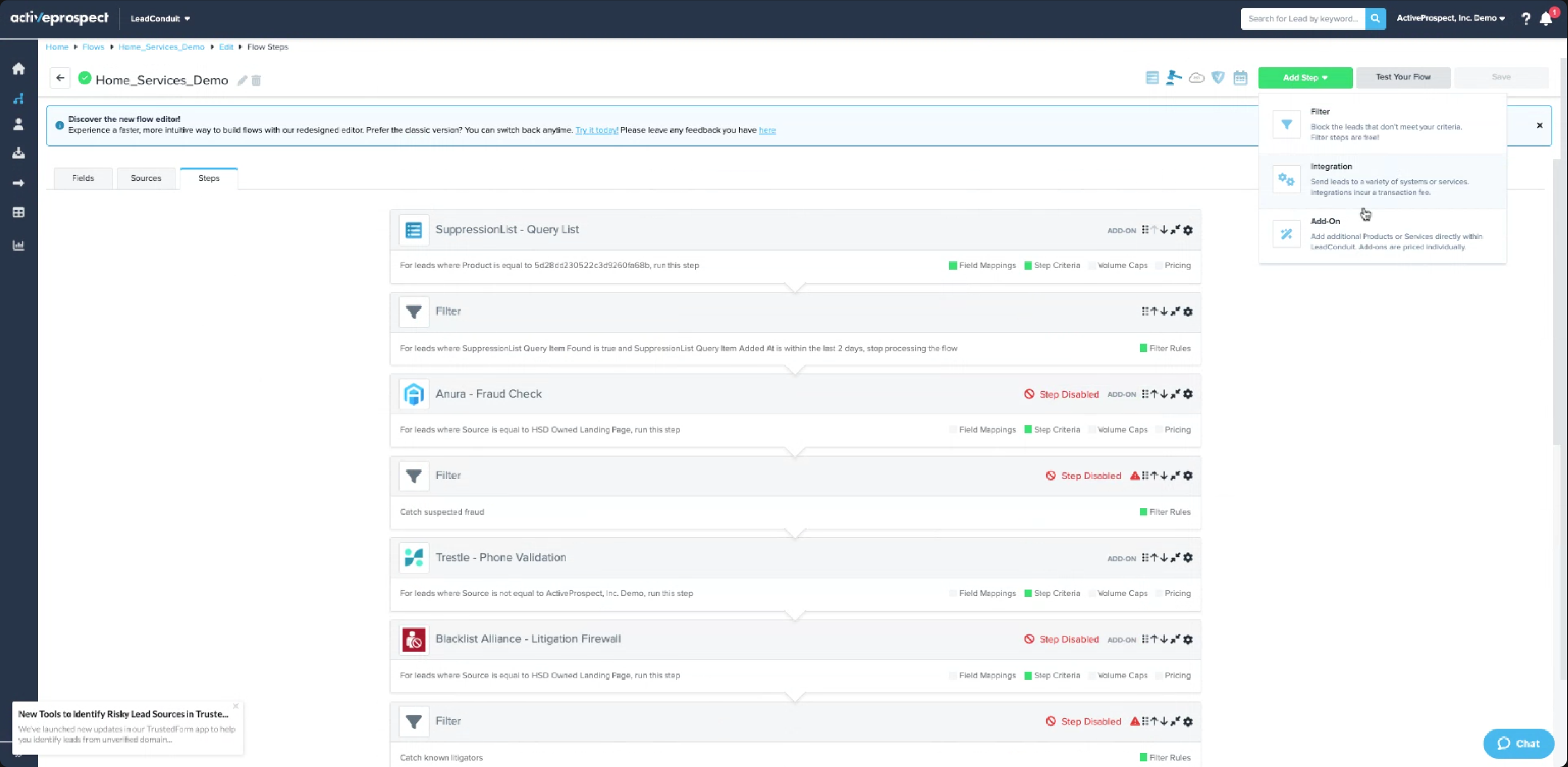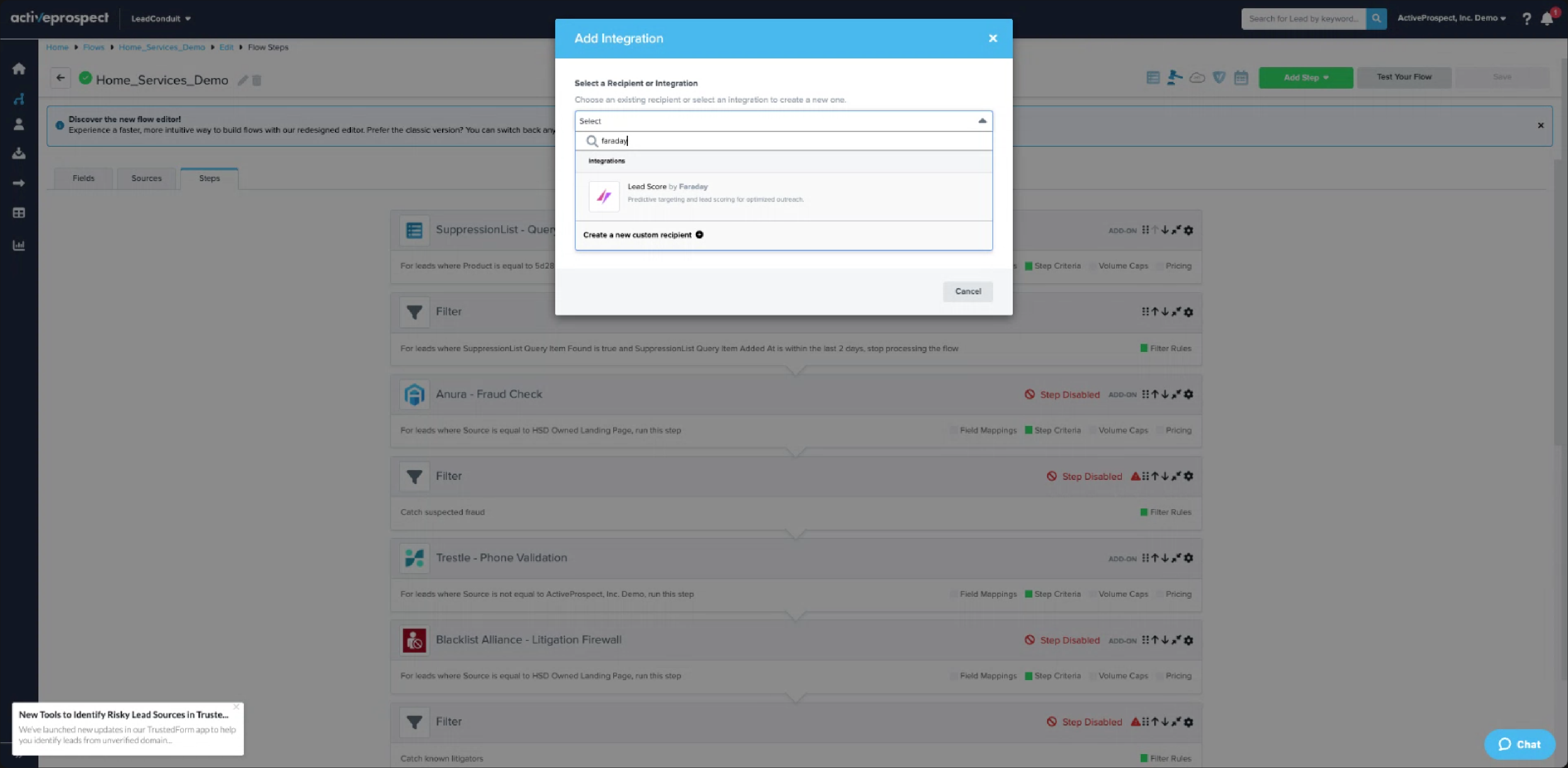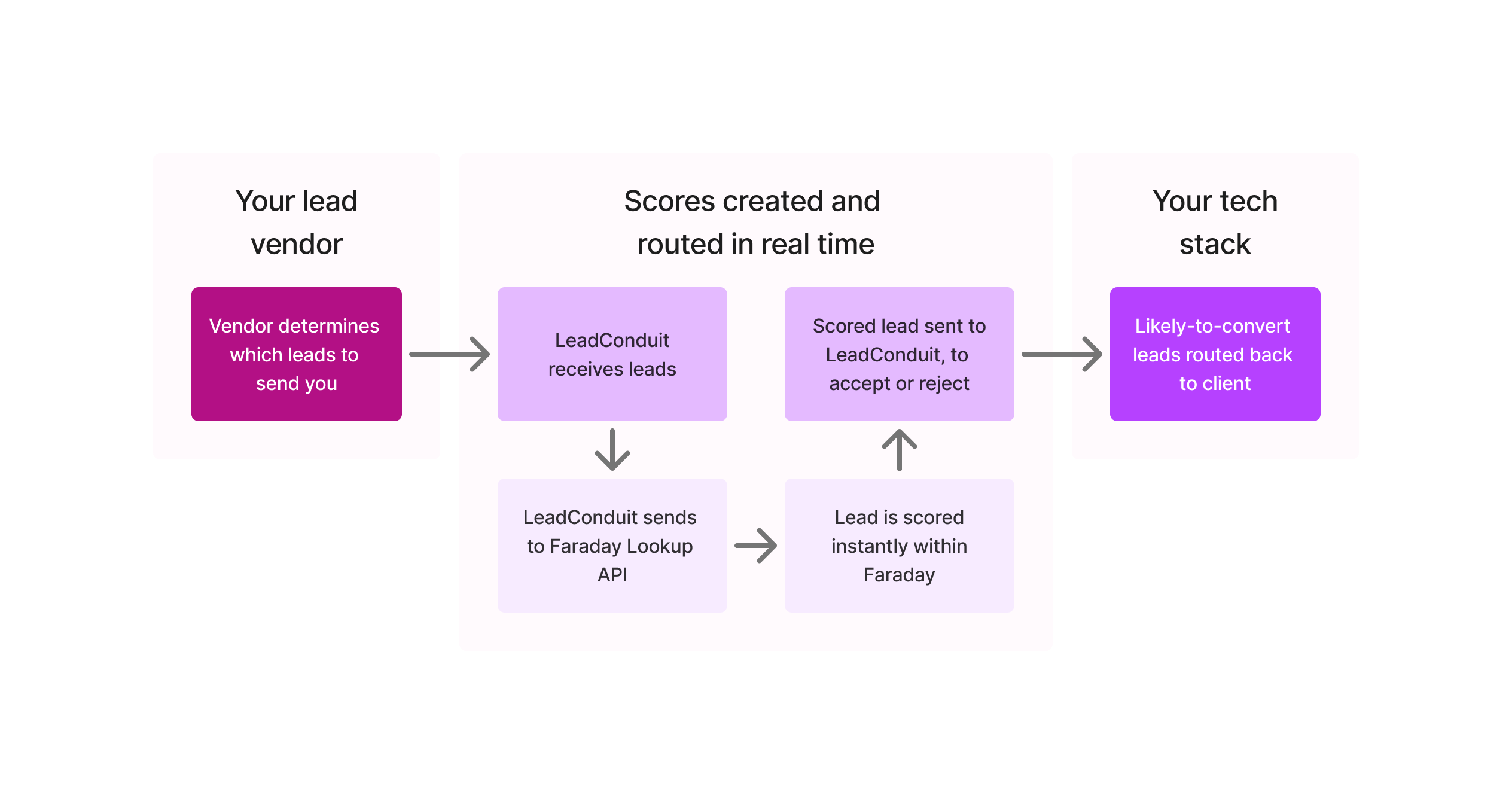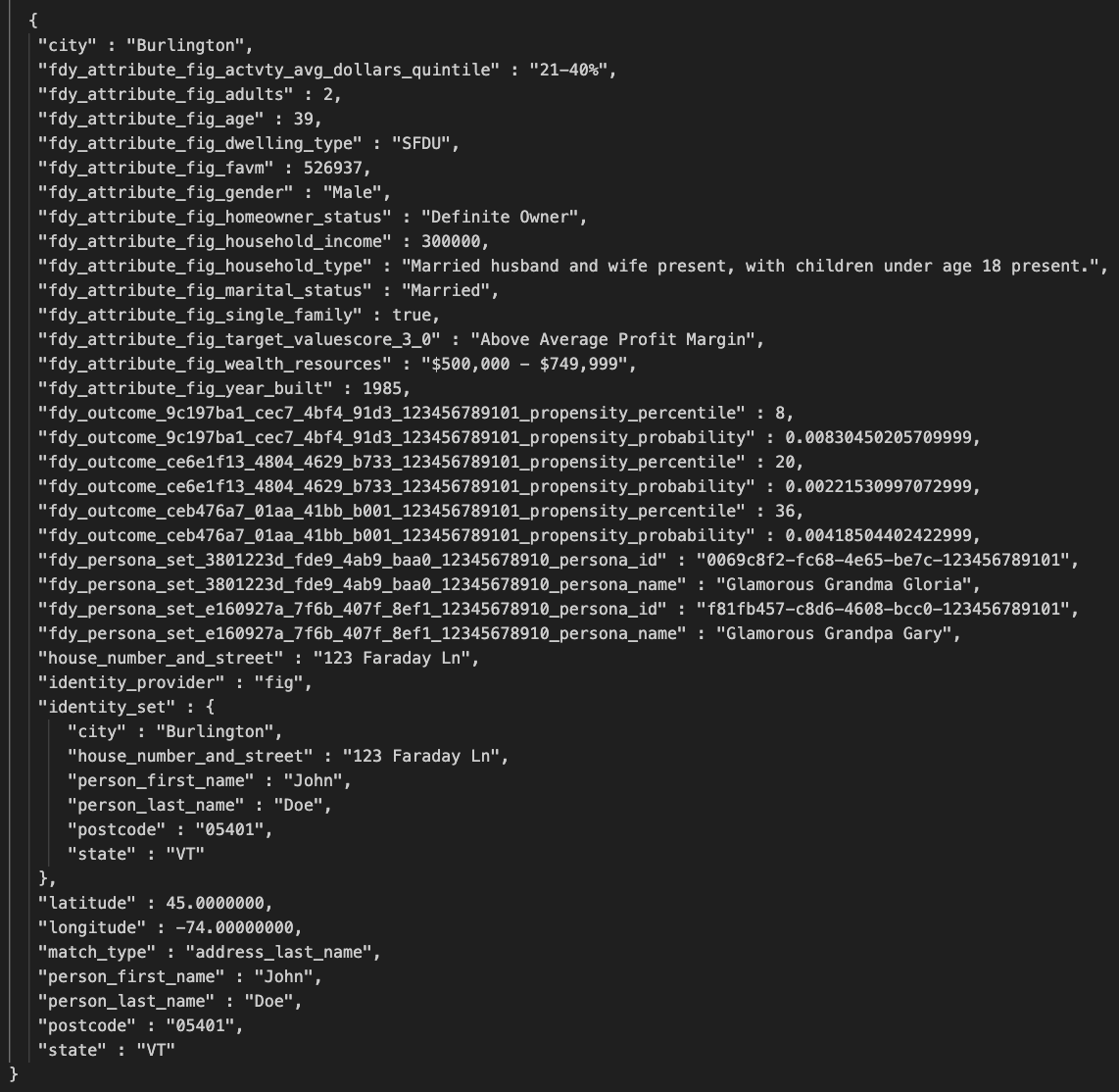Integrating Faraday and LeadConduit - a technical guide
Integrate Faraday’s real-time predictive lead scoring into your LeadConduit flow in under 15 minutes—so you can filter, route, and enrich leads based on high-propensity signals before they hit your CRM.



This post is part of a series called Getting started with Faraday that helps to familiarize Faraday users with the platform
TL;DR: This guide shows you how to plug Faraday's predictive lead scoring directly into your LeadConduit flow. It takes about 10–15 minutes if your Lookup API pipeline is already set up, and you’ll get real-time intelligence on every incoming lead.
— — —
Already an ActiveProspect user? Great call 👏
But did you know you could be getting even more value out of LeadConduit?
By integrating Faraday with ActiveProspect, you can automatically score incoming leads in real time, allowing LeadConduit to reject low-quality ones before they hit your CRM. That means more time for your team to focus on the right people—and less budget wasted on the wrong ones.
In this post, we’ll walk you through exactly how to connect Faraday to your LeadConduit flow using a custom step. It’s fast, flexible, and a whole lot easier than building an internal model from scratch.
Why integrate Faraday into LeadConduit?
This integration gives you real-time access to Faraday’s AI-powered lead insights—including conversion propensities, persona classifications, and custom attributes. That means you can stop low-propensity leads at the source, route high-quality prospects based on persona-fit or probability thresholds, and enrich the rest for downstream personalization.
It's fast (millisecond response time), flexible, and fully customizable to your lead acquisition goals.
Step 1: Get your Faraday setup ready
Before anything can flow through LeadConduit, you’ll want to make sure your Faraday pipeline is in place and ready to respond. This is your starting point: a deployed Lookup API endpoint that’s ready to score leads in real time.
To make the connection work, you’ll need a few pieces of info from your Faraday account:
- Your completed Lookup API deployment—this is where all your scores are stored before retrieval
- Your target ID
- Your endpoint URL:
https://api.faraday.ai/v1/targets/<YOUR_TARGET_ID>/lookup - Your production API key (a.k.a. your token)
- Optional: A list of payload response fields you want to retrieve (e.g. - probability scores, persona set clusters, attributes, etc.)
If you’ve got those five pieces, you’re ready to build. And if you're not sure where to find some of these, don't stress—your Faraday point of contact can walk you through it.
Step 2: Set up your custom step in LeadConduit
Now that Faraday is ready to respond, let’s wire it into your LeadConduit flow. This step is where identity data flows in, predictions come out, and your routing logic can make smarter decisions in real time.
Inside LeadConduit, go to the flow you want to edit and add a custom integration step. Here’s how to configure it:
- Format: JSON
- Method:
POST - URL:
https://api.faraday.ai/v1/targets/<YOUR_TARGET_ID>/lookup - Headers:
Content-Type: application/jsonAuthorization: Bearer <YOUR_API_KEY>
Field mappings
Next, you’ll need to map your LeadConduit identity fields (all as JSON properties) to Faraday’s inputs. Here’s what you’ll want to map.
person_first_nameperson_last_namehouse_number_and_streetcitystatepostcodeemailphone
The more identifiers you include, the better the match rate. A good rule of thumb: aim to send at least email or phone, plus name and address when possible.
Once that’s set up, Faraday will respond with predictive scores in real time. But here’s the part that matters: what you do with that score.
What do you do with the score?
Once Faraday returns a predictive score (and any other fields you've configured), you can use LeadConduit’s flexible logic tools—like filters or branching steps—to take action based on that information.
💡 For example, many LeadConduit users set up filters based on returned fields from third-party integrations. According to ActiveProspect’s API documentation, it's common to create conditions that gate or route leads depending on values returned from an external service.
Your team might choose to:
- Pause or reject leads below a certain score threshold
- Route high-scoring leads directly to sales or a priority CRM path
- Nurture mid-tier leads via a different flow
- Append persona data for downstream personalization
Just note: exactly how you act on the data depends on how your LeadConduit flow is configured. You’ll want to coordinate with your ops team or your ActiveProspect contact to ensure the field names and logic steps match your goals.
Understanding the data exchange
👀 Visual learner? Here’s a simplified view of how data moves through this integration:
Input requirements
You don’t need to send everything, but certain combinations are more effective:
- Email (or SHA256-hashed)
- Full address (street + city + state)
- Phone + last name
The more data you include, the more accurate your results.
Output fields you can expect
When Faraday processes the identity, it returns structured output to your flow. These include:
- The identity information submitted
- Outcomes like
percentileandprobability - Persona details like
cluster_idandcluster_name - Datapoints based on your use case (custom model outputs)
- Cohort memberships
- Metadata like
match_typeanderror
Note: match_type and error are static key names (they don’t change). The others depend on your pipeline config and what you’ve set up with your Faraday team.
Example request & response
An example call:
An example response:
How this supports your lead acquisition strategy
This isn’t just a tech integration—it’s a strategy upgrade. With Faraday connected to LeadConduit, you’re applying predictive intelligence the moment a lead enters your flow.
That means:
- Lower acquisition costs, since poor-fit leads are rejected earlier
- Better sales efficiency, with lead prioritization based on conversion likelihood
- More personalized outreach, using appended persona and trait data
You’re making smarter decisions earlier—and giving your team a cleaner, more focused pipeline to work with.
Final thoughts
This setup gives your lead flow an intelligence upgrade. Whether you're filtering out poor-fit leads, scoring for immediate action, or enriching records for downstream personalization, Faraday’s integration with LeadConduit upgrades your entire lead flow—from first contact to final conversion.
Have questions or want help configuring your deployment? Reach out—we’re happy to walk through it together.

Chris Thomas
Chris Thomas is a Principal Solutions Engineer at Faraday, where he helps clients turn messy consumer data into clear, actionable predictive workflows. With a background in data engineering, analytics and technical support, he specializes in streamlining client data integration and advising on pipeline design within Faraday infrastructure. When he isn’t working with big data or transforming it with SQL, he's curating and mixing music, bathing in nature and dancing.

Ben Rose
Ben Rose is a Growth Specialist at Faraday, where he focuses on turning the company’s work with data and consumer behavior into clear stories and the systems that support them at scale. With a diverse background ranging from Theatrical and Architectural design to Art Direction, Ben brings a unique "design-thinking" approach to growth marketing. When he isn’t optimizing workflows or writing content, he’s likely composing electronic music or hiking in the back country.

Ready for easy AI?
Skip the ML struggle and focus on your downstream application. We have built-in demographic data so you can get started with just your PII.





